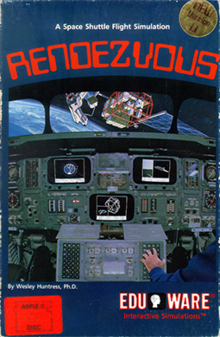
Microsoft Flight Simulator is a series of flight simulator programs for Microsoft Windows operating systems, and earlier for MS-DOS and Classic Mac OS. It was an early product in the Microsoft application portfolio and differed significantly from Microsoft's other software, which was largely business-oriented. In November 2022, Microsoft Flight Simulator is the longest-running software product line for Microsoft, predating Windows by three years. Microsoft Flight Simulator is one of the longest-running PC video game series of all time.

Star Raiders is a first-person space combat simulator for the Atari 8-bit family of computers. It was written by Doug Neubauer, an Atari employee, and released as a cartridge by Atari in March 1980. The game is considered the platform's killer app. It was later ported to the Atari 2600, Atari 5200, and Atari ST.
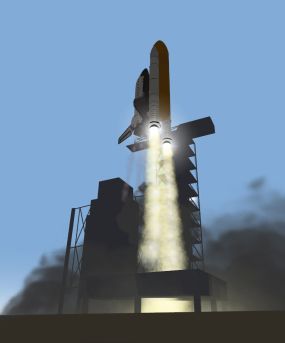
Orbiter is a space flight simulator program developed to simulate spaceflight using realistic Newtonian physics. The simulator was released on 27 November 2000; the latest edition, labeled "Orbiter 2016", was released on 30 August 2016, the first new version of the simulator since 2010. On 27 July 2021, Dr Schweiger announced to the Orbiter Community that Orbiter is being published under open source MIT license.

Microsoft Space Simulator is a space flight simulator program, based on Microsoft Flight Simulator for MS-DOS. It was one of the first general-purpose space flight simulators and it incorporated concepts from astrodynamics, motion, and celestial mechanics. Microsoft Space Simulator is a space flight simulator program that was developed by Microsoft and released in 1994. The program allows users to experience the thrill of space flight, while also providing a realistic simulation of the physics and mechanics of space travel.

Roadwar 2000 is a 1986 video game published by Strategic Simulations, Inc. It is a turn-based strategy game set in a post-apocalyptic future which resembles the world portrayed in the Mad Max films.
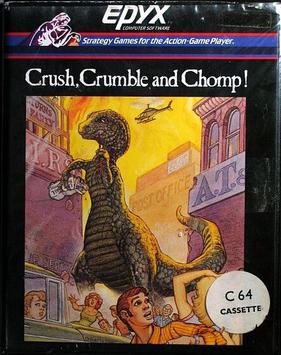
Crush, Crumble and Chomp! is a 1981 video game where the player takes control of a movie monster and attacks a major city, such as New York or San Francisco. It was published in 1981 for the TRS-80, Apple II, and Atari 8-bit family. Ports to the VIC-20, Commodore 64, and DOS were released later. Some versions were published under the company's original name of Automated Simulations, while the rest use Epyx.
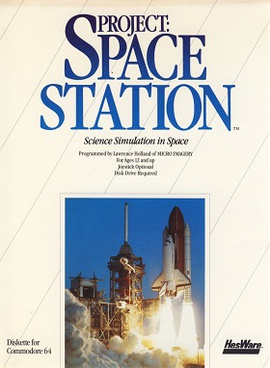
Project Space Station is a simulation game written for the Commodore 64 computer published in 1985 by HESware. It was ported to the Apple II and DOS.
Edu-Ware Services, Inc. was an educational and entertainment software publisher established in 1979 by Sherwin Steffin and Steven Pederson. It was known for its adventure games, role-playing video games, and flight simulators for the Apple II family of computers.

Star Trek: Strategic Operations Simulator is a space combat simulation arcade game based on the original Star Trek television program and movie series, and released by Sega in 1983. Star Trek uses color vector graphics for both a 2D display and a 3D first-person perspective. The player controls the Starship Enterprise and must defend sectors from invading Klingon ships. The game includes synthesized speech

Shuttle is a space flight simulator game developed by Vektor Grafix and published by Virgin Games. It was released in 1992 for the IBM PC, Amiga and Atari ST.
A space flight simulation is a genre of flight simulator video games that lets players experience space flight to varying degrees of realism. Common mechanics include space exploration, space trade and space combat.
An orbiter is a type of a spacecraft.

Microsoft Flight Simulator, commonly known as Microsoft Flight Simulator 1.0, is a flight simulator video game, released in November 1982 for the IBM PC. It is the first release in the Microsoft Flight Simulator series.
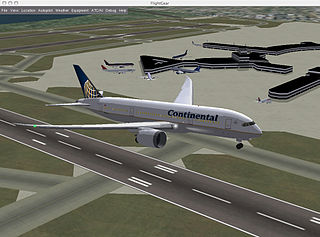
A flight simulation video game refers to the simulation of various aspects of flight or the flight environment for purposes other than flight training or aircraft development. A significant community of simulation enthusiasts is supported by several commercial software packages, as well as commercial and homebuilt hardware. Open-source software that is used by the aerospace industry like FlightGear, whose flight dynamics engine (JSBSim) is used in a 2015 NASA benchmark to judge new simulation code to space industry standards, is also available for private use. A popular type of flight simulators video games are combat flight simulators, which simulate combat air operations from the pilot and crew's point of view. Combat flight simulation titles are more numerous than civilian flight simulators due to variety of subject matter available and market demand.

Space Shuttle: A Journey into Space is a space flight simulator game designed by Steve Kitchen for the Atari 2600 and published by Activision in 1983. It is one of the first realistic spacecraft simulations available for home systems. Space Shuttle was adapted to the Atari 8-bit family and Atari 5200 by Bob Henderson (1984), then ported to the ZX Spectrum (1984), Commodore 64 (1984), Amstrad CPC (1986), and MSX (1986). The 1984 Activision Software catalog also mentions an Apple II version.

Dungeon! is a 1982 video game adaptation of the board game Dungeon!

FS1 Flight Simulator is a 1979 video game published by Sublogic for the Apple II. A TRS-80 version followed in 1980. FS1 Flight Simulator is a flight simulator in the cockpit of a slightly modernized Sopwith Camel. FS1 is the first in a line of simulations from Sublogic which, beginning in 1982, were also sold by Microsoft as Microsoft Flight Simulator.

Galaxy is a 1981 video game published by Avalon Hill and developed by Microcomputer Games for the Apple II, TRS-80, Atari 8-bit family, Commodore PET, Commodore 64, IBM PC compatibles, FM-7, and TI-99/4A. It was originally published as Galactic Empires by Powersoft in 1979.
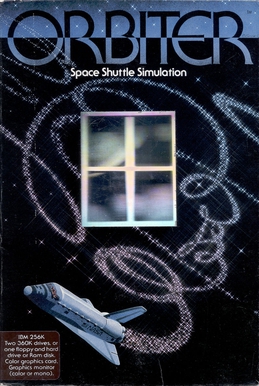
Orbiter is a 1986 video game published by Spectrum HoloByte.
